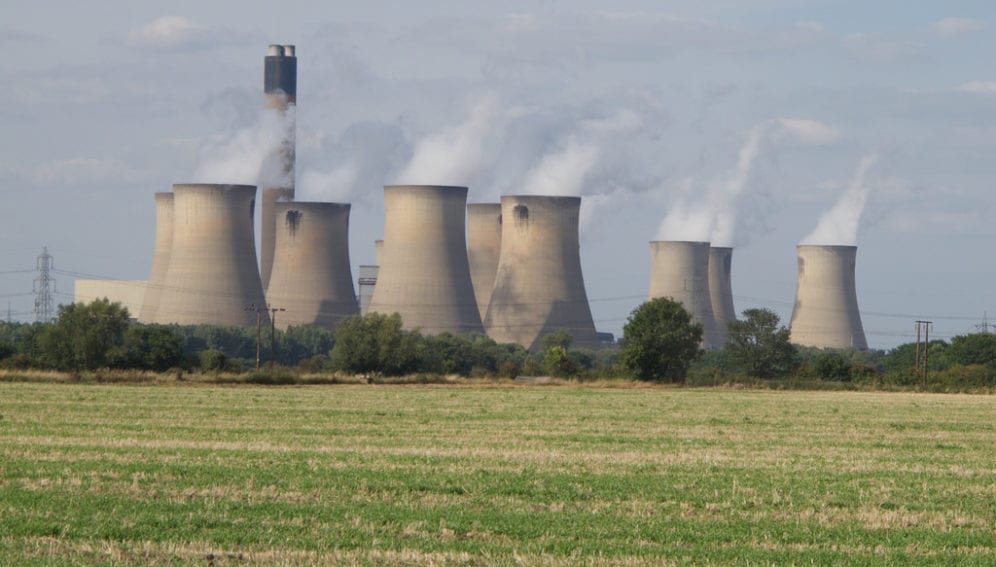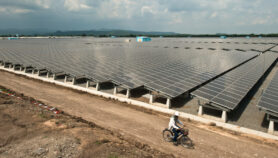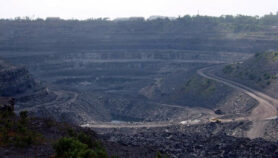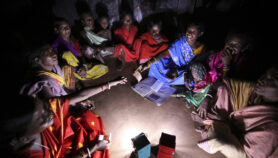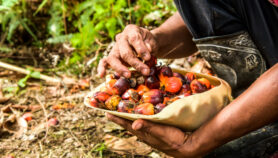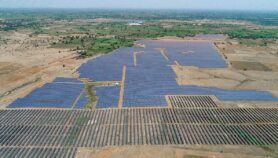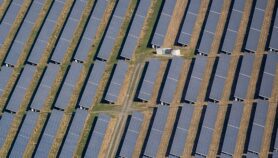By: Fatima Arkin
Send to a friend
The details you provide on this page will not be used to send unsolicited email, and will not be sold to a 3rd party. See privacy policy.
[MANILA] Rachel Kyte, chief executive officer of the Sustainable Energy for All (SE4All) initiative and special representative of the UN Secretary-General for SE4All, believes that clean and sustainable energy is the key to overcoming poverty and climate change.
In this interview with SciDev.Net conducted on the sidelines of the 2016 Asia Clean Energy Forum in Manila, Kyte shares her thoughts on energy efficiency and related concerns.
Does providing energy for all run counter to cutting climate rise since solar energy requires lots of water to clean the panels while wind energy produces turbines that increase our carbon footprint?
You’re right. We’re working with finite boundaries and we’re knocking up against those boundaries. So resource efficiency is important and it’s one of the fastest moving trends in the private sector. But when it comes to energy generation, one has to plan in an integrated way. We cannot ignore the nexus of food, water and energy. You need water to store energy, you need energy to desalinate water and pump water. A lot of biomass can be used for energy and food.
But there is no comparison between the impacts of fossil fuels and renewables. The technologies keep constantly evolving. Wind power technology has improved to the point where the impacts on the environment is much less than it used to be. The technologies of solar power mean that you need less water now to keep the panels clean.
The other thing is that it’s a transition. Every country has a different resource endowment, a different energy mix, and they want to get to a point where everybody has power and we’re on a track for 1.5 degrees. It’s going to need managing different energy sources in a complementary way, both centralised and decentralised, with that first lens being one of efficiency so we get all the benefits of efficiency before we build more power generation. Efficiency is the cheapest first fuel source. It just isn’t understood in that way by enough political leaders.
Is investing in energy efficiency cheaper than producing more renewables?
It’s not either or. In developed countries, efficiency is absolutely fundamental because the carbon intensity of the economy is not on track for a 1.5 degree world. Power plants that are coming to an end of their lives need to be
replaced with cleaner sources. [Our] cities simply will not be clean or livable enough unless we have different energy sources.
For the least developed [countries] that still have huge access gaps, it’s about installing power, grid connected and distribution, and doing it quickly. The subsidy regime that exists in those countries has tended to subsidise fossil fuel and grid power. [But] the price of renewables now is competitive with coal in many different situations, and if there is a regulatory and administrative level playing field, then they become even more competitive. You have grid connected renewables coming in – in Chile, Mexico, United Arab Emirates – at prices equivalent or lower than coal. In Asia Pacific, expensive renewables will continue to get cheaper. You have to plan for the future.
Is there a scenario in which using coal is okay?
Coal will continue to be in the mix for a number of countries in the short to medium term. But there’s a question whether in fact it’s actually the cheapest and best option. When you count in health, development and climate change impacts, as well as the cost of coal, increasingly it looks less and less competitive. When you’re building for the future, you’re not looking at building a power plant for this week, you’re building it for the next 10, 20 years. When you look at 20 years, that coal-fired plant is at risk of being a stranded asset. I think that’s why a lot of investors are moving away from coal now and why the international financial community is focused on making it easier to access finance alternatives.
According to the International Energy Agency, South-East Asia has the highest growth rate in coal use. What advice would you give to energy ministers here who are pushing investments in renewable energy but face opposition from coal supporters?
Put efficiency first. Once you do that, you can see what your real power generation needs are. Then look at all the resources available, what kind of mix you’d like to have. Look also at the investment and policy environment, and what signals you’re sending, and see to what extent you’re politically prepared. Then look at the experienced countries around the world where power generation bids are being won by renewable energy firms at competitive or better prices than coal.
In countries where you have an endowment of geothermal, the cost and capital dynamics of geothermal are different than coal. There’s an upfront cost around exploration. But then go to the international community that supports you, the development banks, and say, I would like to be able to install cleaner over dirtier energy because it’s better for my people in the long run, can you help me do that?
There are plenty of examples from around the world, from Chile, Colombia, Peru, South Africa to the Gulf and elsewhere. The bids coming in [are] cleaner energy solutions. Ministers need to believe that it is actually happening and that it’s possible.
Does the technology already exist to reach the last mile of energy access?
Yes. A lot of the technology exists and a lot of business models revolve around getting that technology to the last mile. The old mind set is that we’re going to have centralised grids then eventually we will get to the last mile. But if we pursue distributed solutions, allow for mini-grids and off-grid solutions, take the barriers away, and put in place some kind of financial support, because there is some kind of subsidy needed in certain cases, it’s possible to connect communities much quicker. From advances in solar home systems to advances in mini-grids, there are abundant technology solutions and emerging business models. That means that there isn’t a country in this region that can’t set itself a very aggressive target to close the access gap.
This piece was produced by SciDev.Net’s South-East Asia & Pacific desk.


